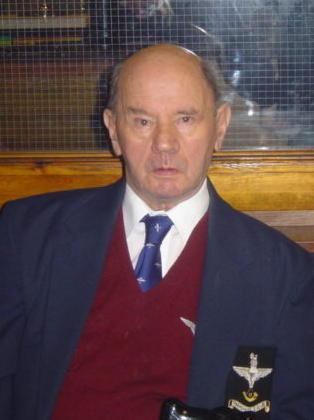Bob was born and raised in Birmingham and enlisted into The Dorset Regiment in 1940 aged 17 years.
After an unsuccessful application to become a glider pilot he was posted to Kitchener Barracks, Chatham, to be trained as a sapper in The Royal Engineers (‘Trade Carpenter’).
He later volunteered for airborne forces and was posted to Hardwick Hall prior to attending Parachute Course 58 which ran at RAF Ringway from 29 March to 11 April 1943.
Shortly after this he was posted to North Africa to reinforce the 1st Parachute Squadron, Royal Engineers, and took part in the seaborne landings by the 1st Airborne Division at Taranto, Italy in September 1943.
Bob's unit arrived back in Liverpool in December 1943 and members of the squadron were billeted in the village of Donington, Lincolnshire. Luckily for Bob his billet turned out to be the local inn, namely The Red Cow! Following Christmas leave they went into training for the expected landing on the European mainland and by this time Bob was batman to Captain Eric Mackay (later Maj Gen Mackay).
D-Day came and the 1st Airborne Division was placed on the ‘Strategic Reserve’ for which around sixteen operations were planned and cancelled, some at the very last minute.
Then on 17 September 1944, 1st Para Sqn RE was deployed for Operation Market Garden. As part of A Troop he jumped on to DZ X near Wolfheze at 13.40 hrs forming up with John Frost’s 2nd Battalion. After many skirmishes en route they reached Arnhem main bridge on the Sunday evening taking up positions on the eastern side of the bridge ramp.
Bob recalled "I remember only too well, taking over a house on the orders of Captain Eric Mackay next to the bridge. He ordered us to make the place ready as our fire position, and he instructed us to knock out all the glass from the windows. We finished doing that, and then he realised there were too many of us for this one small house so we left. The damage we caused still makes me smile today. We found a Girls' School on the embankment which we fortified. It was at the school that we realised we had come unstuck, the Krauts started shelling us with phosphorus shells. The crafty buggers, shelled the building either side of us, causing us to not only have incoming shells, but also serious fires on either side of us. It was at this stage that I was temporarily blinded by phosphorous, I was taken down into the basement near the road ramp of the bridge. It was later that I was moved into trenches that had been dug outside. It was here that we were captured and taken as POWs to a vegetable warehouse. The Krauts lined us all up and checked our pockets. They then interviewed us separately, asking for our name, rank and number. They knew we had embarked from Donington and had been involved in the attacks at both North Africa and Italy previously.They asked me for my next of kin address, so that they could write and tell my mother that I survived and was being held a prisoner. A lot of people don’t know this, but we were placed into cattle trucks at Arnhem and kept there for days. It was rough, and we were poorly treated with hardly any food."
Bob was transported by cattle truck to Limberg and then onto Stalag IVB Muhlberg, near Dresden, East Germany. He was at Stalag IVD at Torgau by the time the Russians caught up with them, however the captivity did not end for Bob as the Russians took their time in handing back liberated British POWs. They just moved them around in East Germany until a deal was struck with the British and USA governments and Bob did not arrive home until mid August 1945.
After the war he married Violet and had one son, David.
Bob and Violet went into the brewery trade and ran several pubs and clubs, amongst other things. His last 10 years, prior to retirement were spent working for WH Smith Wholesale as a night packer in Birmingham, ensuring the daily papers were delivered on time. He also became involved in many ex-service associations.
Bob, passed away on 24 October 2011, aged 88 years, and was laid to rest on Friday 4th November. PRA Standards and some 50 members of the maroon machine were present along with 20 or so family and friends.
By Gil Boyd BEM
Read More

Latest Comments
There are currently no comments for this content.
Add Comment
In order to add comments you must be registered with ParaData.
If you are currently a ParaData member please login.
If you are not currently a ParaData member but wish to get involved please register.